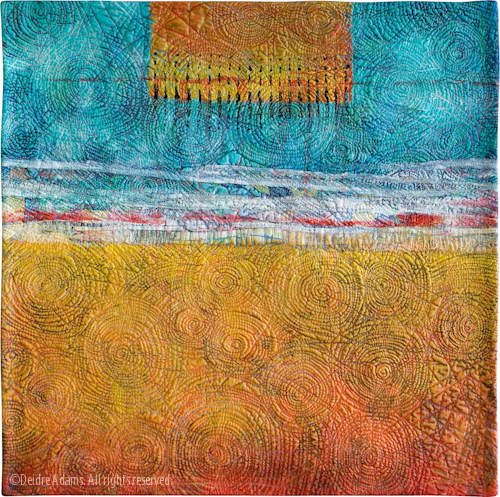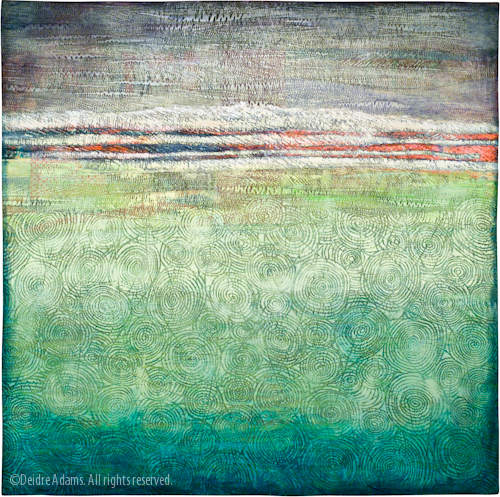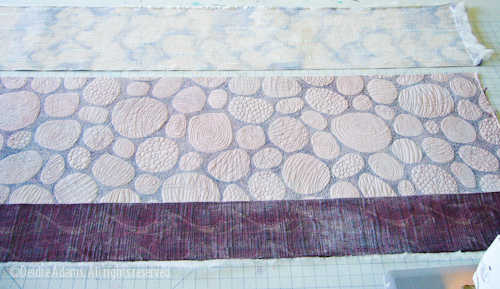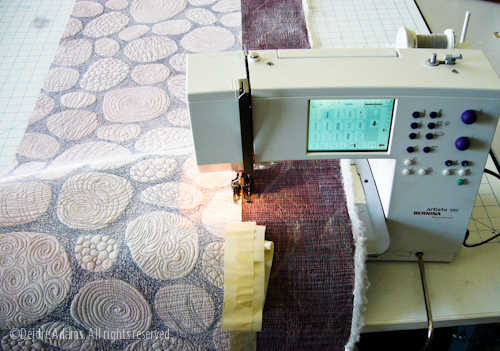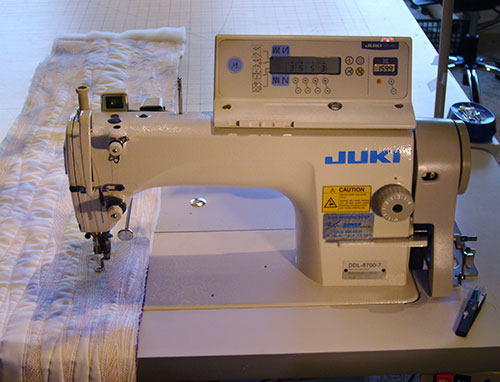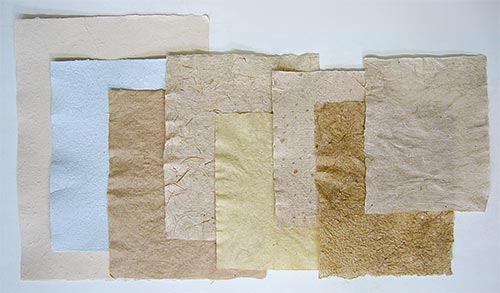Ritz-Carlton commission
The commission I’m working on is for the new Ritz-Carlton in Lake Tahoe, set to open later this year. This was a very good contract for Translations Gallery, including several pieces by multiple gallery artists. In addition to the commission piece, they also bought this piece:
Horizon IV, 24 x 24, ©2006 Deidre Adams
And this piece:
Horizon XI, 34 x 34 inches, ©2008 Deidre Adams
Progress on the new version of Iterations is coming along nicely. Quilting and blocking the panels separately made things ridiculously fast. No endless scrunching and turning and readjusting. Then all I had to do was square up the adjoining edges and join them to one another.
To put the panels together, I just set them side by side and stitched them together with a closely spaced zigzag stitch. This required getting the trusty Bernina back out, since the Juki does not do anything but straight stitch. Note the use of the very sexy and high-tech masking tape for basting purposes.
After the panels were all attached, here’s what I ended up with:
At this point, I trim off the edges and put on the binding. This is a faced binding which I turn to the back so it doesn’t show. Now all that remains is to do the painting. After the first few layerings, here’s how it currently looks:
Several more layerings of color will be needed to achieve the final depth and richness I’m after. I should be finished by the end of this weekend if all goes according to plan. But other plans for this weekend include writing an 8-10 page paper for Art & Cultural Heritage class, finishing four 22×30 paintings for Watermedia II, doing client corrections on two freelance design projects, and celebrating Mother’s Day and my birthday, both tomorrow!
I’m certainly not trying to say I’m amazing — flat-out crazy for trying to do everything at once would be much closer to the mark. It is very hard to try to do so many things at once and do them all at your very best level of accomplishment. I’ve found myself having to compromise a lot this semester, which I really do hate. I’ve always been (OK, at least since graduating from high school) kind of a sociopath about wanting all As in school. But really, who cares? I’m not some young kid who’s going to be out looking for my first job and has nothing else but a grade-point average to prove my worth. Why can’t I just relax and not stress out about it?
Since I had three studio classes this semester, it really was too much and I just could not devote the amount of time to every assignment that I would have liked. I did make some work that I was pretty happy with, but I wonder how much better I could have done with more time and proper focus? Well, I’ll start posting some of it soon and you can tell me what you think.
I have finals next week, and then on Friday I’m leaving to drive to Ohio, where I will be attending the SAQA Art & Excellence Conference (held in conjunction with the Quilt National Dairy Barn exhibit). I’ll be teaching a 3-day preconference class called Photoshop for Artists. Then I’ll be heading to the Surface Design Association Conference, Off the Grid, in Kansas City. I’ve been wanting to go to the SDA conference for years, and this was the first time it seemed that everything was in place for me to do it. I’m really looking forward to immersing myself in this textile-focused world for a few days. Should be a lot of fun!

